Category: Idaho National Guard
Gowen Field Firefighters Learn Firsthand About Flashover – “Near Certain Death”
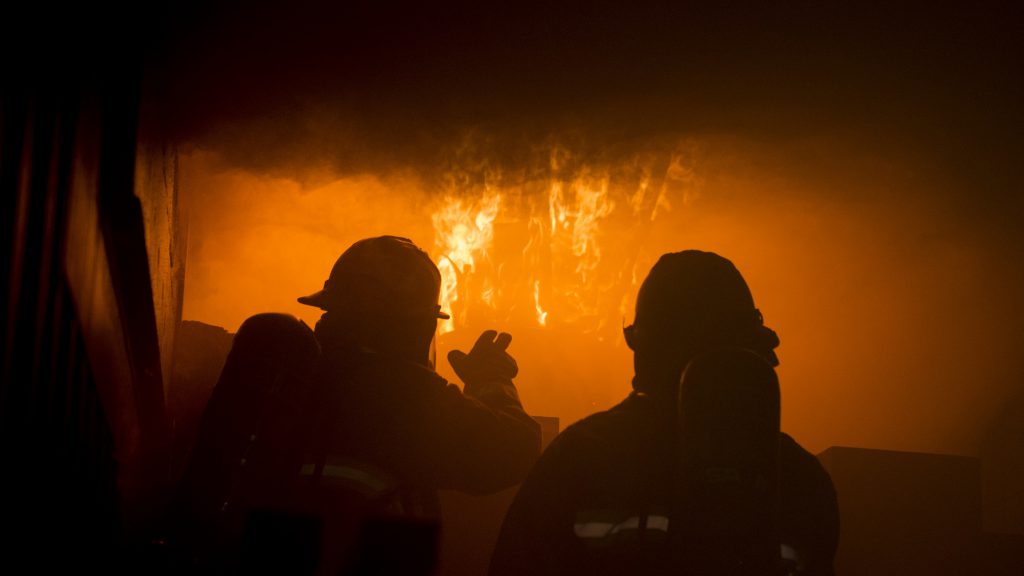
Story by Ryan White
124th Fighter Wing
Firefighters from Gowen Field participated in a unique flashover-training course, Sept. 11-13, 2019, Gowen Field, Boise, Idaho.
The course allowed for nearly 30 firefighters from the Gowen Field Fire Department and four firefighters from the Orchard Combat Training Center to perform live fire training in a controlled environment. It consisted of four hours of lecture and four hours in a specialized burn trailer.
“This is one of those training opportunities that every firefighter who goes through it remembers,” said SSgt. Reginald Pierce III, a firefighter with the Gowen Field Fire Department and primary instructor for the training.
Flashover happens when all contents in a room hit their combustion point and ignite at the same time in a flash. The training provided an opportunity to see what flashover looks like and figure out how to deal with it, how to prevent it, and how to react and escape if encountered.
“If a firefighter is in a structure fire and the room flashes, it’s near certain death,” said Pierce. “You have two seconds, as a firefighter in your full gear, to make it out of that situation before your gear fails. That’s why this training is so important.”
According to Pierce, the training helps build confidence in equipment, demonstrates what temperature ratings gear can handle and also teaches firemen how to utilize water in this type of scenario.
“For some of these guys, it’s the first time they are seeing real fire because fire school only uses propane,” said SSgt Jack Simonds, a firefighter with the Gowen Field Fire Department and assistant instructor for the training.
The live fire is done in a specialized mobile burn trailer. The upper part of the trailer is a burn chamber and the lower middle area is a classroom. A burn barrel filled with wood is lit in the center of the chamber and ignites the walls and roof, which are lined with oriented strand board. The off-gassing of the wood igniting then causes fire to rollover the firefighters’ heads as the room heats up to over 700 degrees.
“In fire school, you’re learning strategy and techniques,” said Simonds. “Here, there’s nothing about strategy and technique. All we’re doing is studying the fire. We’re not trying to fight it. We’re trying to watch it and learn from it—see how it’s going to go up the ceiling and how the heat is going to come down the wall and light on fire.”
Now that they’ve had this training, Pierce believes the firefighters will be able to quickly see signs of a possible flashover and decide if they should fight a fire defensively from the outside. Knowing those signs can be the difference between near certain death and living to fight fire another day.
Back to Newsroom
Join the Idaho Air National Guard
Idaho Army National Guard’s best warriors – Barrera, Crockett
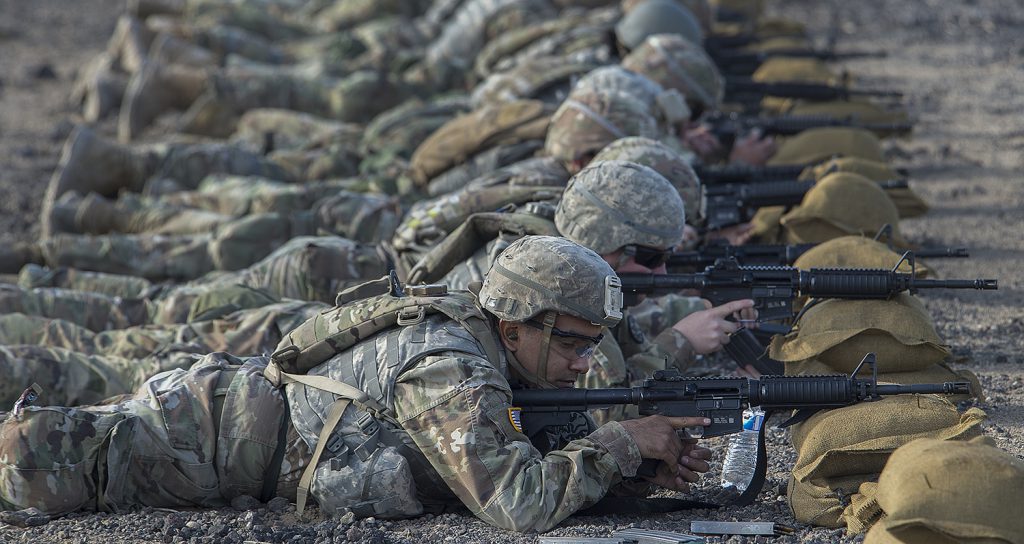
Story by Capt. Robert Taylor
Idaho Army National Guard
After three days of intense competition during the Idaho National Guard’s Best Warrior Competition, Sgt. Roy Barrera Jr. and Spc. Colton Crockett were recognized as the Noncommissioned Officer and Soldier of the Year.
Throughout the competition, four NCOs and 11 Soldiers from across the state competed in the event held at Gowen Field and the Orchard Combat Training Center Sep. 5-7.
“This competition is about the warrior spirit,” said Brig. Gen. Farin Schwartz, commander, Idaho Army National Guard.
Barrera Jr. and Crockett both serve in the 116th Cavalry Brigade Combat Team. Barrera Jr. is in the brigade’s headquarters company and Crockett serves in the 2nd Battalion, 116th Cavalry Regiment.
Sgt. Andrew Henson, also from 2-116 CAV REG, finished second in the NCO category. Sgt. Jordan Hudson and Cpl. Juan Campos also competed to be the state’s top NCO.
Spc. Alex Amour finished as the runner up for the Soldier category. Spc. Jonathon Ames, Pfc. Rodney Farichild, Spc. Jaslyn Greco, Prf. Connor Hensley, Spc. Isaac Morado, Pfc. Adam Nichols, Pfc. Nathan Rands, Pfc. Benjamin Rudolph and Spc. Dakota Woodwick also competed in the completion.
“These Soldiers are a great representative of the Idaho Army National Guard,” Schwartz said. “Their high level of physical fitness and mental fitness separates them from their peers.”
Competitors were tested on numerous Army Warrior Tasks, including their ability to disassemble and reassemble multiple weapons; land navigation at day and night; ruck marching; shooting; combatives; first aid and the Army’s new Army Combat Fitness Test. Competitors were stressed physically with little sleep to push them to their limits.
Idaho National Guard builds a new road for the Shoshone-Paiute Tribe
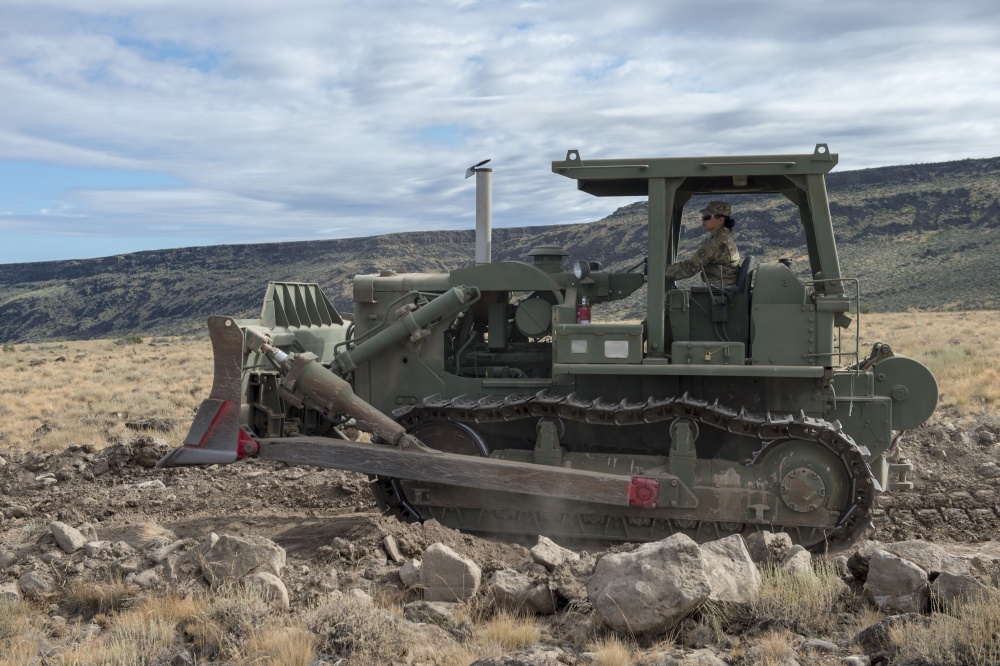
Story by Ryan White
124th Fighter Wing
The Idaho Air National Guard’s 124th Civil Engineer Squadron and the Idaho Army National Guard’s 116th Calvary Brigade Combat Team and Installation Support Unit completed construction of BIA-211 Damon Trail during an Innovative Readiness Training project, Aug. 19-26, 2019, Duck Valley Indian Reservation, Idaho.
“We faced similar tasks out here that we’d face in the field, so it was good training for us,” said 1st Lt. Matthew Mills, deputy base civil engineer, 124th CES. “I am very impressed with everyone who worked on the project. We had fairly seasoned heavy equipment operators teaching beginning operators. That’s what this was all about—getting our training up and getting our readiness up, so when these Airmen and Soldiers go overseas they know what to do.”
The team of 18 Airmen and Soldiers from the IDANG and IDARNG completed a new road to replace the existing Damon Trail—an eight-mile fire-access trail, providing access to grazing grounds on the Duck Valley Indian Reservation north-east of the town of Owyhee, Nevada. The trail had badly eroded and was inaccessible when there was a forest fire in 2014. Since then, improving the access road has been a high priority for the Shoshone-Paiute Tribe. The Idaho National Guard began work on improving the access trail for the tribe three years ago for readiness training and to give back to the tribe.
“We serve the citizens of Idaho while building our combat readiness,” said Maj. Gen. Michael Garshak, adjutant general of Idaho. “It is especially rewarding having our Soldiers and Airmen work together in support of the Shoshone-Paiute Tribe. This IRT project is a tremendous opportunity to highlight what makes being a Guardsman special.”
According to ISU Deputy Commander Lt. Col. Dennis Stitt, The first year of the project was a stock trail improvement of Damon Trail. Erosion had made a steep incline of the trail in-traversable, so no wheeled vehicles could get to the eroded area to be repaired. Instead, UH-60 Blackhawk helicopters from the 1-183rd Assault Helicopter Battalion hoisted gravel up to the top of the mountain to fill in the erosion.
The original plan for this year’s portion of the project was to rebuild another part of the existing road. However, after surveying the area, engineers decided it would be better to build a new road to replace the existing road. The team of Airmen and Soldier heavy equipment operators used IDARNG equipment to excavate the new road, remove large rocks and truck-in material from a quarry six miles away to put on top of the road. This year’s work completed the three-year project.
“We added in a little over a mile of new road,” said Mills. “We cut out the part of the road that was non-accessible. It was unrepairable and for most of the year it had snow drifts that made it inaccessible. The new road won’t have that issue.”
Idaho National Guard demonstrates joint capabilities to governor
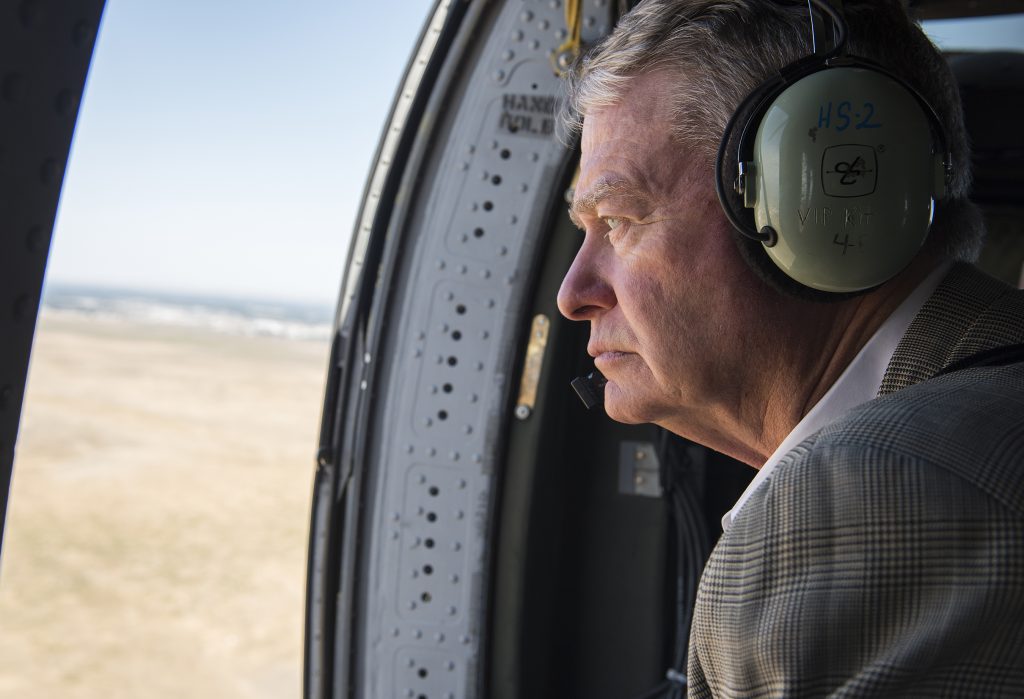
Story by Master Sgt. Becky Vanshur
124th Fighter Wing
Idaho Gov. Brad Little met with several key military leaders Aug. 19 at the Orchard Combat Training Center to receive an update on current Idaho National Guard programs and major upcoming events and exercises.
“It is critical that the governor, in his role as the commander in chief of the Idaho National Guard, takes the time to see the capabilities of our Soldiers and Airmen,” said Maj. Gen. Michael Garshak, adjutant general of Idaho. “It allows him to fully understand, firsthand, the issues that are relevant to our readiness.”
Senior leaders briefed the governor on unit training missions and deployment rotations, the F-35A Lighting II Environmental Impact Study, Idaho’s State Partnership Program with Cambodia, the Idaho Youth ChalleNGe Academy dormitory project, A-10 Thunderbolt II modernization efforts, and current and future issues facing the Orchard Combat Training Center.
The OCTC plays a large role in the readiness and training of Idaho Army National Guard Soldiers and Idaho Air National Guard Airmen. During the governor’s visit, the Idaho National Guard highlighted the ways it ensures good environmental stewardship to protect and preserve the National Conservation Area of the OCTC, which includes the OCTC Fire Department’s quick response times.
“Our fire department has an extremely quick response time – less than two minutes,” said Lt. Col. Chris Borders, Idaho National Guard public affairs officer. “In return, we also have the smallest average number of acres burned in the NCA and a high concentrated area of native vegetation and monitored wildlife, due to our fire department and the Idaho National Guard biologists working to preserve this area.”
During a tour of the OCTC, Tactical Air Control Party Master Sgt. Douglas Brock from the 124th Air Support Operations Squadron called in air strike locations to A-10 Thunderbolt II pilots above to emphasize the capabilities of close air support with ground forces, similar to a deployed environment. This also highlighted to the key leaders the joint relationship between the Army and the Air National Guard working together in a combat situation.
“We are extremely fortunate here in Idaho to have Gov. Little embrace his duties as commander in chief and fully support the men and women of the Idaho National Guard,” said Garshak.
Back to Newsroom
Join the Idaho Air National Guard
Children of National Guardsmen “survived” summer camp
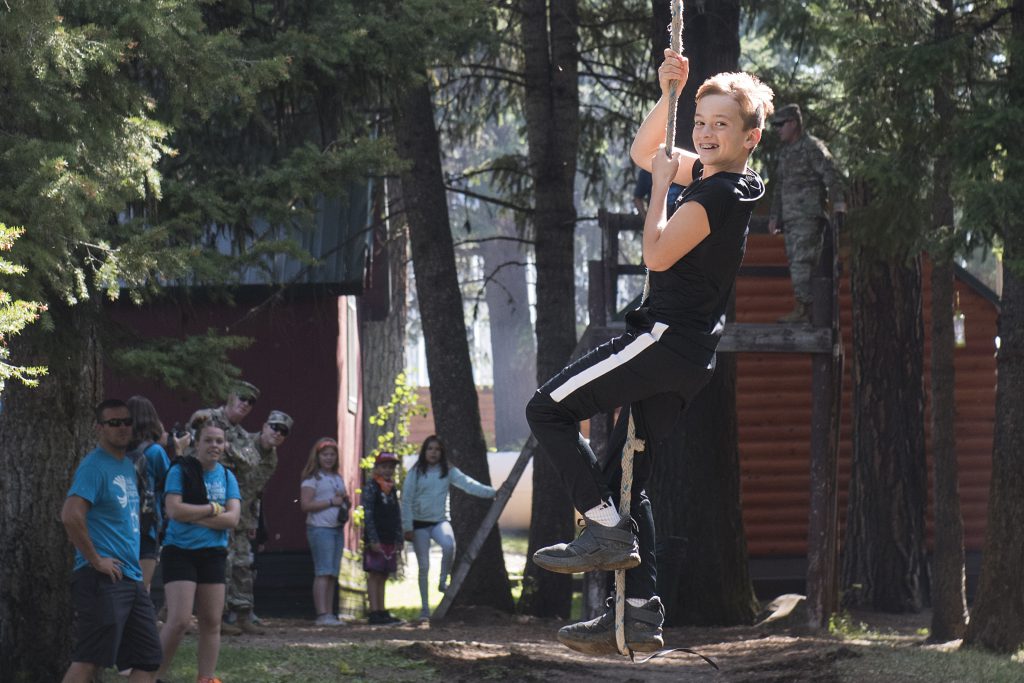
Story by Master Sgt. Becky Vanshur
124th Fighter Wing
McCall, IDAHO – After a week away from their parents, 115 children of Idaho Army and Air National Guardsmen not only survived the “Survivor”-themed summer camp, they thrived. The event-filled camp was held Aug 12-16 and was designed to build resiliency and strength in youth of military families.
“This camp is a small token of our appreciation for these children,” said Brig. Gen. Farin Schwartz, assistant adjutant general-Army, Idaho Army National Guard. “We realize that we impact the lives of the youth and appreciate the sacrifice of each and every one of these children, and what they do to support their mom or dad when they are away.”
Idaho National Guard Child and Youth Programs invite children from families in the Idaho National Guard to a winter camp and a summer camp each year. This year’s summer camp theme was “Survivor – Camp vs. The Camper” held at Quaker Hill Camp in McCall.
Activities included archery games, art classes, creative STEM challenges, inner reflection classes, lakeside water activities, a peer pressure and stress management class, a ropes team-building course, team-building races, and a zip line confidence-building course.
“All activities here are fun, but they are based on strength and resiliency training,” said Lt. Col. Douglas Uphoff, IDNG family program director. “The parents of these children could be at risk for a deployment at any time. We are enabling the children to hopefully cope with the stress of their loved ones leaving.”
Older children had the opportunity to volunteer as teen leaders. The child and youth programs are designed with opportunities for youth to gain leadership skills, feel valued, and interact with their peers.
“I love this camp, I have made a lot of friends,” said Gabbie Barton, a participating child at the camp. “I have learned that I am strong.”
Many of these military children shared common experiences with each other during the activities and know each other from past events.
“This camp has been so fun and I learned a lot,” said Lillyan Lowery, whose mother serves in the Idaho Army National Guard. “I have made all of these new friends that I can hang out with after, like her, both of our moms are in the Army together.”
It doesn’t matter how long the deployment is, the goal is for campers to build networks including other children with a similar background. Children at the camp know that their newly bonded friends are also going through the same situation and might have similar issues.
“It’s not easy for children and spouses to have us be in the military,” said Schwartz. “But it is very necessary for us to go out and do what is needed in the defense of our nation.”
Employers had outreach opportunities with the two-day ESGR Boss Lift
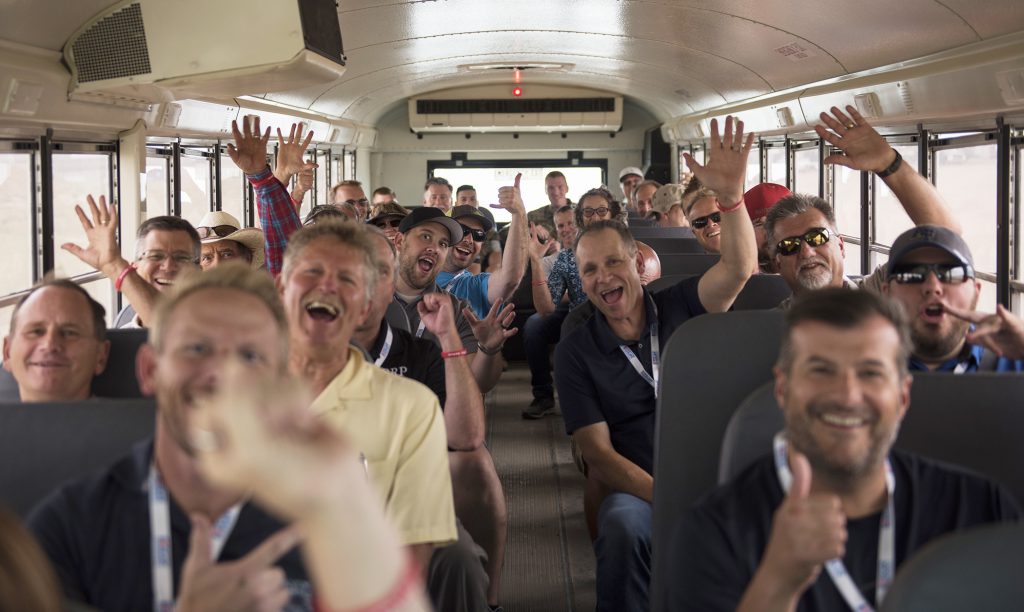
IDAHO ARMY NATIONAL GUARD, UNITED STATES
Story by 2Lt. Crystal Farris
More than 100 National Guard and Reserve employers and supervisors traveled to Gowen Field from across the state today to participate in the Idaho ESGR’s annual Boss Lift.
The two-day event gives participants a first-hand look into what their Soldiers, Marines and Airmen do away from work approximately 36 days of the year for military training.
“We enjoy tremendous support from our employers and the ESGR throughout Idaho and we do not take that for granted,” said Maj. Gen. Michael Garshak, adjutant general of Idaho. “Boss Lift is a great opportunity to create awareness of our missions in the Idaho National Guard and Reserves and to express our appreciation to those employers and the community who contribute to our mission readiness.”
ESGR aims to promote, recognize and develop employer support for Guard and Reserve service through employer outreach opportunities. As part of Boss Lift, Citizen-Soldiers, Marines and Airmen invited their employers to walk a day in their boots touring various training simulators, Gowen Field and Orchard Combat Training Center facilities and ranges, aircraft and other military hardware used by the Idaho National Guard and Reserve units for training. Additionally, Idaho Army National Guard, US Army, Marine Reserve and Idaho Air National Guard representatives were available to answer questions from employers on machinery and provide insight into the life of a military member.
Wendy Lovitt, who supervises Airman Melynda Scheller in her nursing job at Saint Alphonsus Regional Medical Center in Boise, said Scheller was really excited to invite her to Boss Lift.
“Melynda really wanted me to come so I could see everything that goes on in her Guard life,” said Lovitt. “See felt like my seeing it and being around it all would better help me understand things then if she were to explain them herself. I definitely feel more connected to her lifestyle after today.”
Training simulators offered employers a fun look into how service members develop tactical and technical skills in combat operations from a controlled in-door environment. The tour included the 124th Fighter Wing’s A-10 Thunderbolt II and the Idaho Army National Guard’s M4 rifle and HMMWV simulators.
The Idaho Army National Guard’s 1st Battalion of the 183rd Assault Helicopter Battalion flew employers in UH-60 Black Hawks over the vast terrain and world-class military ranges of the Orchard Combat Training Center. For some passengers, it was their first time in a helicopter and for others it offered insight into the austere conditions service members train in throughout the year.
“It is important for employers to understand what their service members do when fulfilling their military commitments,” said Cindy Reese, ESGR state chair. “This event gives them the opportunity to see what their employees do in these times, how they do it and why.”
Idaho Military Division hosts Educator Day
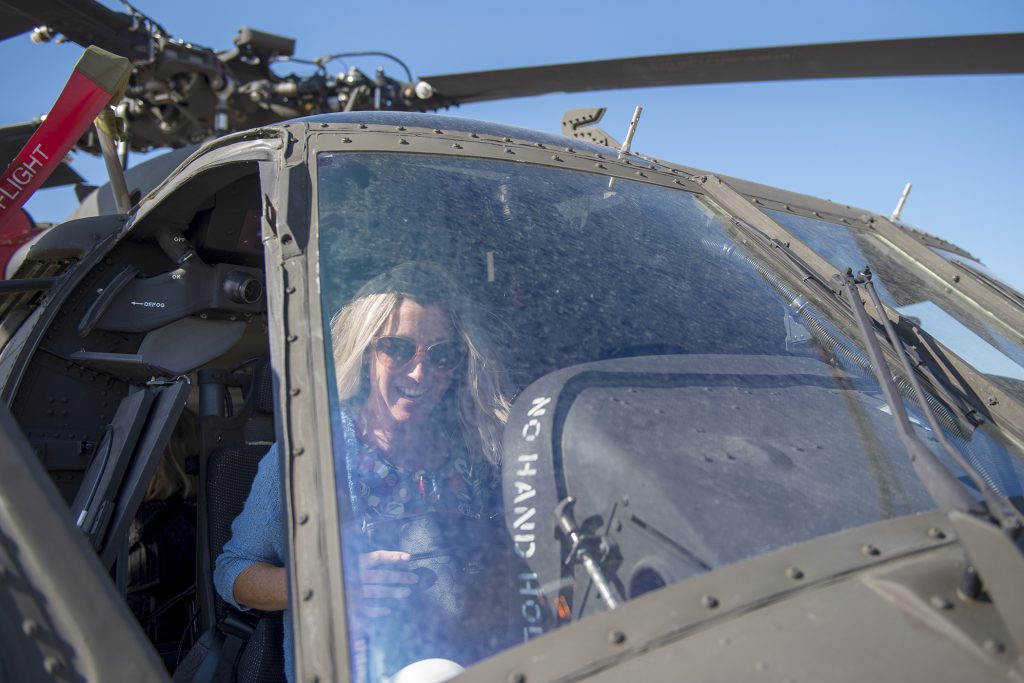
Master Sgt. Becky Vanshur
Idaho National Guard
Gowen Field, IDAHO – The Idaho Military Division collaborated with the Idaho State Department of Education to host Educator Day at Gowen Field, Aug. 9.
Idaho educators spent the day learning how several Idaho Military Division programs help prepare students to achieve and shape their futures.
The one-day event gave more than 30 Idaho teachers and administrators the chance to learn about the unique career and training opportunities, benefits, incentives, family support programs and intangible skills the Idaho National Guard offers.
“I was interested in this program because I see the potential in many of my students,” said Wendy Venable, an eighth grade language arts teacher at Kuna Middle School. “Some students need to see all career options that may be more feasible than college, while others can take advantage of the tremendous benefits the Guard has to offer for college-bound students. Some of my students come from non-educated, low-income households that do not see college as a realistic possibility. What I have learned today is that the Idaho National Guard has something for all types of students.”
Sherri Ybarra, superintendent of public instruction, joined Maj. Gen. Michael J. Garshak, adjutant general of Idaho, for the program’s opening ceremony.
“I have tremendous respect for teachers and educators,” Garshak said. “I hope that they gained an increased awareness today for the opportunities the Idaho National Guard provides young men and women beyond high school.”
Throughout the day, educators toured Idaho Army National Guard and Idaho Air National Guard training simulators, facilities, vehicles, aircraft and other military equipment, including the A-10 Thunderbolt II, the UH-60 Black Hawk and the M1 Abrams Tank.
In addition, educators received short briefs covering the Employer Support of the Guard and Reserve and Family Programs, which support members of the military, veterans and their families. Participants also learned about scholarships and education benefits the Idaho National Guard offers Citizen-Soldiers and Airmen.
“The Guard and some of these programs are a great opportunity for these kids,” said 1st Lt. Warren Hull, 124th Aircraft Maintenance Officer and a pre-engineer, computer science teacher at East Junior High in Boise. “Often times the really, really book-smart kids will struggle a little bit in a nontraditional classroom and the kids that don’t fit the academic mold, do really well in my hands-on classroom setting.”
This seminar highlighted the Idaho Military Division’s educational programs. During the school year, hundreds of fifth grade students from Treasure Valley Title I schools participate in the division’s STARBASE program, which provides students with hands-on STEM training. The Idaho Youth ChalleNGe Academy, located in Pierce, provides 16-18-year-old students who have dropped out or are at risk of doing so, with a second chance to complete high school with their peers or earn a GED. More than 1,300 students have participated in the program over the past five years.
“A great teacher can change a student’s life,” said Senior Master Sgt. Milo Davis, Idaho Air National Guard Recruiting and Retention superintendent. “An informed teacher can affect virtually every aspect of their students’ lives by teaching them the important life lessons that will help them succeed beyond term papers and standardized tests.”
The event was the first time the Idaho Military Division invited educators to spend the day on Gowen Field.
“I am always looking for opportunities to build partnerships,” Garshak said. “The Idaho Military Division supports Gov. Brad Little’s priority of providing great education for our youth so that they can live, work and raise families here in Idaho.”
Idaho Army National Guard returns from Guatemala

Courtesy story
Idaho National Guard
Approximately 150 Soldiers from Idaho’s 1st Battalion of the 183rd Assault Helicopter Battalion returned home Saturday after deploying to Huehuetenango, Guatemala, in support of Beyond the Horizon 2019.
During the operation, Idaho Army National Guard aviation Soldiers provided casualty evacuation support and equipment transportation for U.S. military engineers and medics building local schools and medical clinics.
“We had the opportunity to change lives and be part of a mission that brought dramatic change to the economic growth of Huehuetenango,” said Maj. Bryan Reid, the unit’s operations and training officer. “The experience was life changing and I am grateful to have had the opportunity to participate.”
Soldiers from the unit consisting of crew chiefs, mechanics, petroleum specialists, signal specialists and supply personnel rotated through Guatemala in two-week rotations from April 28 to July 27. They completed 50 missions and 210 flight hours, to include transportation of 600 passengers and 9,000 pounds of cargo.
In addition, the Idaho Army National Guard Soldiers conducted joint training with soldiers from the Guatemalan Armed Forces. The training gave participants the opportunity to share skills and practice loading injured individuals into UH-60 Black Hawks.
“The training provided unique opportunities that challenged everyone throughout our missions,” said Chief Warrant Officer 3 K Kirkendall, Idaho’s aviation training officer. “I’ve never experienced flying missions in an environment such as this and it will forever leave a mark on my career as a pilot.”
Beyond the Horizon is a U.S. Southern Command-sponsored, joint foreign military humanitarian civic assistance exercise. Hundreds of Active Duty, National Guard and Reserve members from all services participate annually to help build relations with the host nation.
101st CST trains with Nampa Police Department
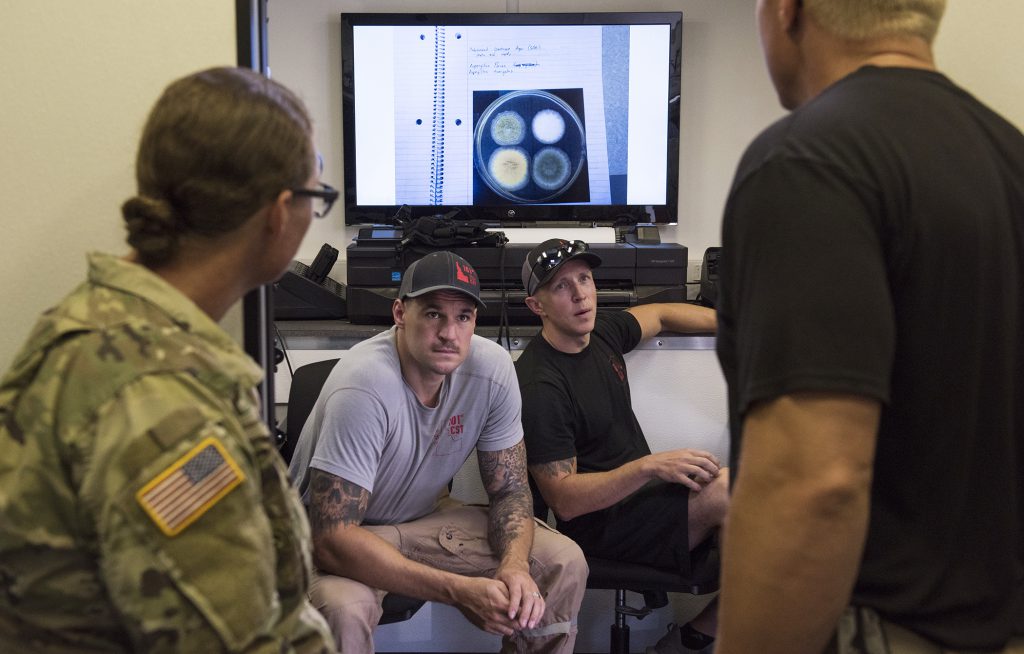
Capt. Robert Taylor
Idaho Army National Guard
NAMPA, Idaho – Soldiers and Airmen from the Idaho National Guard’s 101st Weapons of Mass Destruction Civil Support Team responded to a training incident in Nampa to support the Nampa Police Department July 24.
The training event, held at the empty building that formally housed the Mercy Medical Center, tested the unit’s ability to deploy without notice to a local incident. The Nampa Police Department requested the 101st CST support to complement its own training at the facility simultaneously.
“It’s good to know what support we have nearby so we’re not having officers putting themselves into dangerous situations when we have other resources available,” said Nampa Police Department Sgt. Jason Cantrell.
The training scenario focused on a chemical lab that was discovered while the Nampa Police Department investigated reports of suspicious behavior. The department requested the 101st assistance because the regional hazmat team was unavailable, a scenario that could happen in the event of a real-world incident.
Cantrell explained it was more practical and safe to request support from the 101st to investigate unknown chemical agents than to send a police officer into the building wearing a gas mask. The 101st was able to report to the scene in less than two hours after notification.
The 101st trains year-round and often with local first responder agencies. The 22-person team is one of 57 CST units in the National Guard across the country. Each team provides unique expertise and capabilities to assist state governors in preparing for and responding to chemical, biological, radiological or nuclear incidents and natural disasters as part of each state’s emergency response structures.
“It’s nice to build relationships with first responders so we can put faces to names if there is a real-world event,” said Sgt. 1st Class Richard Bachmeier, the unit’s communication section chief.
The 101st has worked with the Nampa Police Department on real-world missions in the past. In March, the unit responded to the same parking lot after the Nampa Police Department received a bomb threat involving a nearby apartment complex. Units did not find any suspicious items or substances and police arrested a suspect in connection to the threat.
In February 2018 the 101st and Nampa Police Department worked together with other local agencies in a large-scale training event at the Ford Idaho Center.
“We enjoy our relationship with the 101st,” Cantrell said. “Training together allows us to be able to get a better understanding of their capabilities and operating procedures to facilitate something of this magnitude.”
Brig. Gen. Nolan retires after nearly 35 years of service
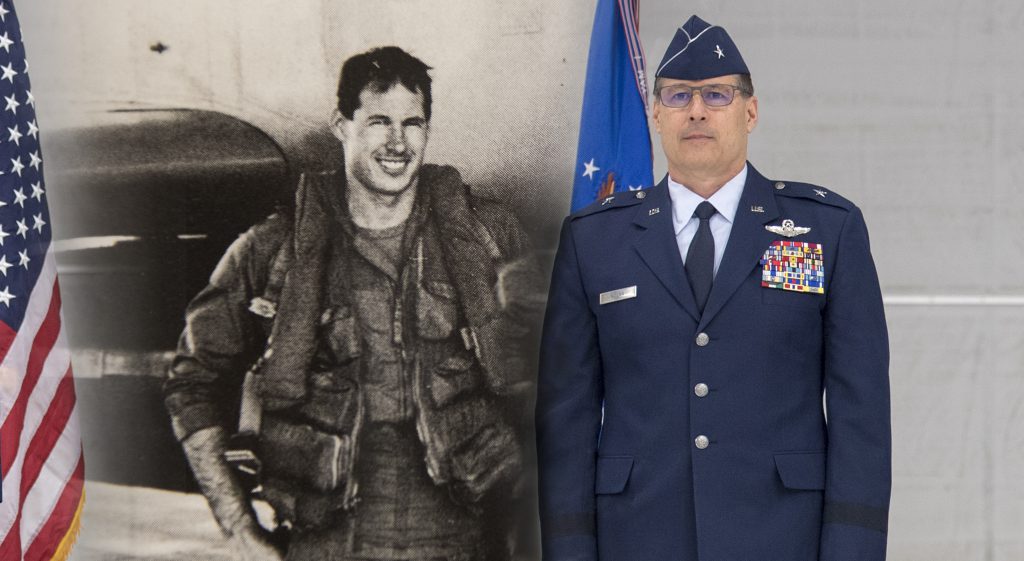
By Master Sgt. Becky Vanshur
Idaho Air National Guard
Gowen Field, Idaho – After nearly 35 years of service, Brig. Gen. Michael A. Nolan, former Assistant Adjutant General-Air, Idaho Air National Guard, retired at a ceremony at Gowen Field on July 17. As his career comes to an end, Nolan realizes the bond and experiences he shares with others are what is most important to him.
“It’s the people you work with every day that you have a common experience with,” said Nolan. “This shared experience brings you close to each other as a team. It brings out the best in each of us, we come together, and we share together. As I retire, I will now be on the outside of this, but I will still have that shared common experience with all of these great people.”
Nolan was previously the commander of the 124th Fighter Wing at Gowen Field and was a pilot, flying missions with the F-4E and F-4G Phantom II aircraft and the A-10 Thunderbolt II aircraft.
Before he joined the Idaho Air National Guard, Nolan was an F-4G pilot instructor in California and met several Idaho pilots there. He decided to turn down an active duty Air Force pilot bonus in October 1992 and seven days later he moved to Idaho to fly the F-4G assigned to the 190th Fighter Squadron.
“The best decision I ever made was to move here,” said Nolan. “My experience in the Guard has been remarkable and I felt really fortunate to be welcomed, to be given the opportunities I was given, and to be trusted.”
When Idaho’s mission changed in 1996, Nolan transitioned to an A-10 Thunderbolt II pilot. Although he flew F-4 missions, the A-10 mission was his passion.
“The Warthog is a phenomenal machine,” said Nolan. “The A-10 mission had much more of an impact on me than my other flying experiences.”
Five years ago, Nolan flew his last A-10 flight as the 124th Fighter Wing commander and was promoted to command the Idaho Air Guard.
Nolan said that one of his greatest leadership moments as the Assistant Adjutant General was being involved in ending the concept of moving the Idaho Air National Guard to Mountain Home Air Force Base and transitioning to the F-15E mission.
“The Strike Eagle at Mountain Home is an awesome mission; it just wasn’t for us as a local, community-based Guard unit,” said Nolan. “Parallel to keeping us in Boise, was the fight to keep and modernize our A-10s.”
To Nolan, his military career was about more than just flying the F-4 and A-10 missions.
“People join the military for various reasons, for me it was that I wanted to fly jets, but then once you’re in the military you realize that you are part of something that is much bigger than yourself,” said Nolan.
 Official Government Website
Official Government Website